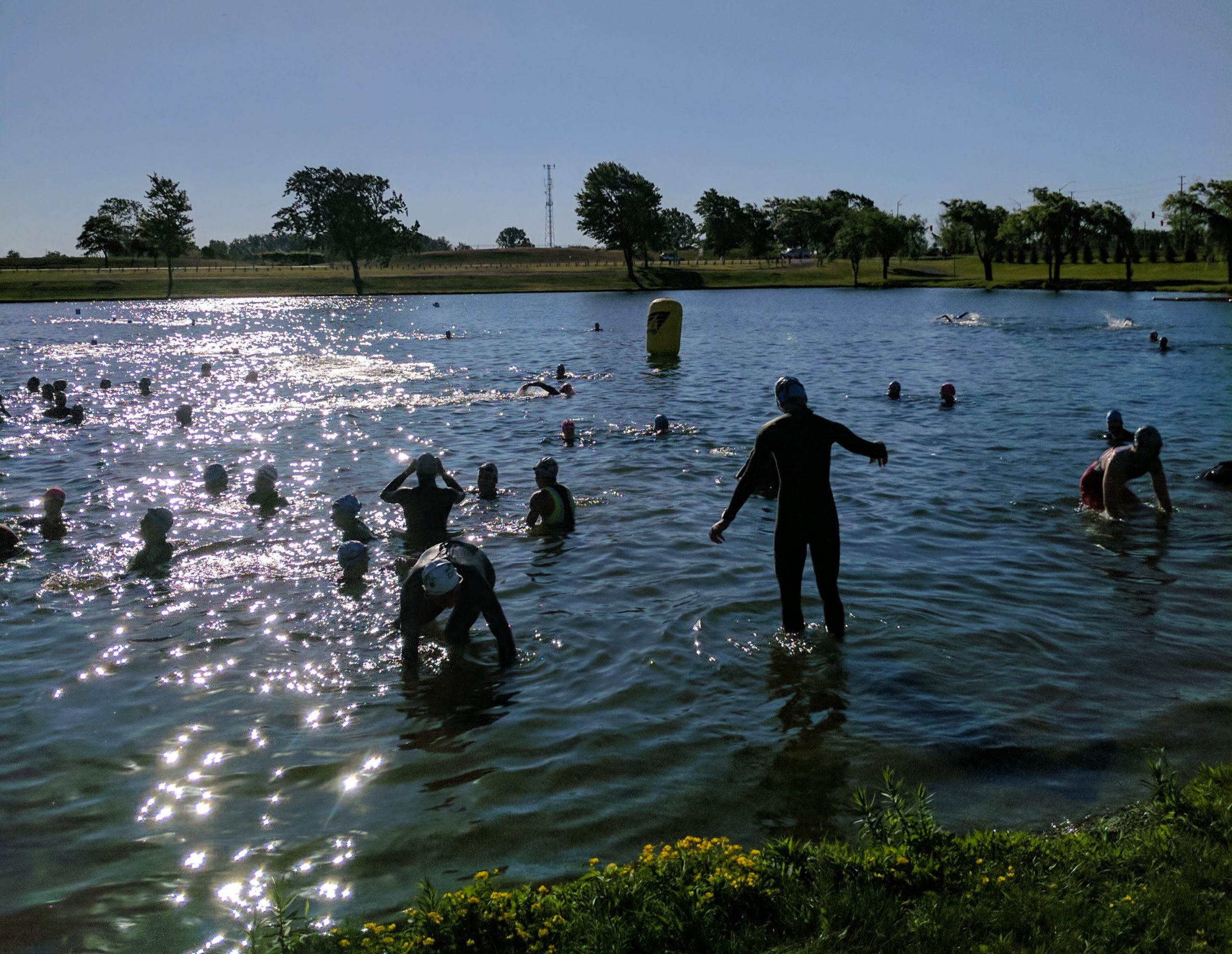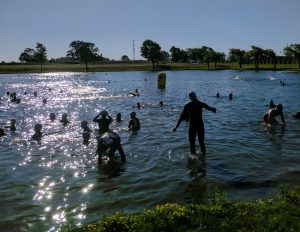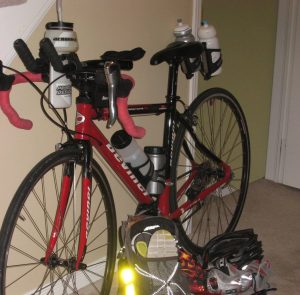If you are on our site, you probably already know that triathlon is an endurance event that consists of swimming, cycling, and running, in that order. There are a variety of different distances in triathlon racing – the Sprint Triathlon is typically a 750m swim, 20k bike and 5k run. The Olympic distance is a 1500m swim, 40k bike and 10k run. Half Iron distance is 1900m swim, 90k bike and 21.1k run. Iron distance is 3800m swim, 180k bike and 42.2k run. The swim is the most daunting leg for many athletes. Whether you’re a seasoned triathlete or a newcomer, understanding the unique aspects of triathlon swimming can help you approach the sport with confidence and strategy.
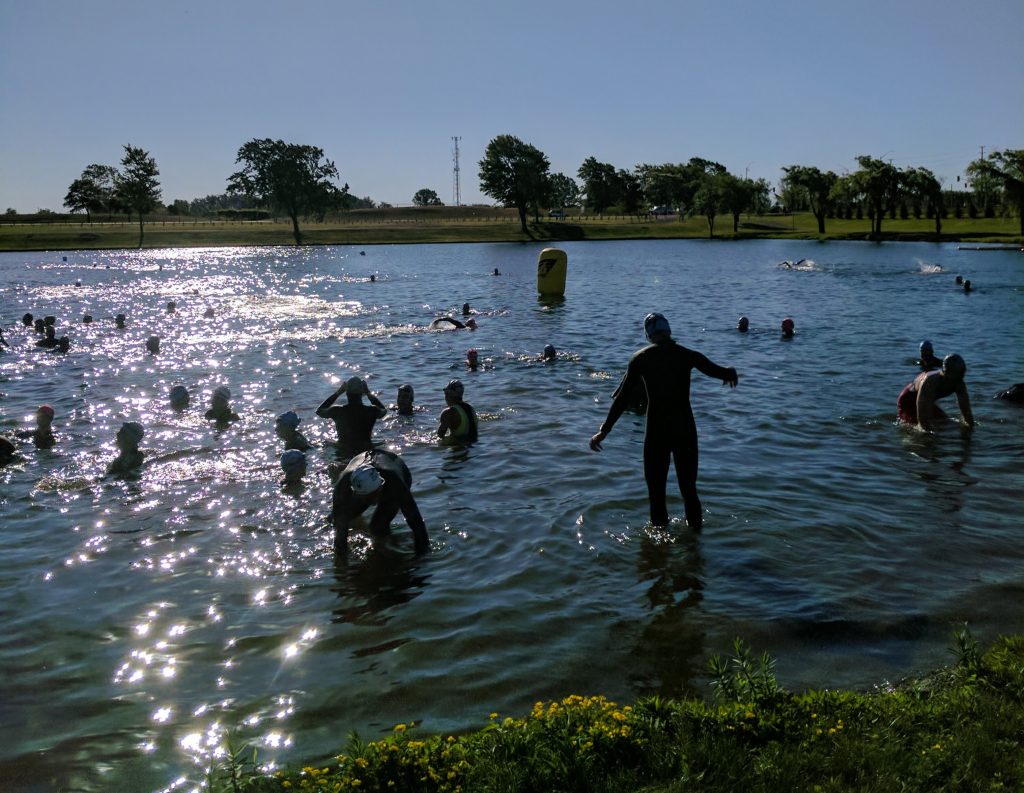
In a triathlon, the swim is typically the first stage, and it can range from short sprints to longer distances as described above. Triathlon swims can take place in a variety of settings: open water, lakes, rivers, and oceans. Unlike pool swimming, open water swimming presents additional challenges such as currents, waves, the need to sight due to lack of lane markers, not to mention the addition of hundreds or more other swimmers in close proximity to you. It is essential to be comfortable with swimming – and particularly comfortable in open water environments.
Open Water vs. Pool Swimming
It’s important for triathletes to practice swimming in open water – and get comfortable in their wetsuit if they plan to wear one for their race. Compared to pool swimming, open water swim can feel like a different sport altogether. Here are some key differences:
- Visibility: In open water, you can’t see the bottom, making navigation more difficult. Swimmers often rely on sighting techniques to stay on course and avoid drifting off-track. One suggestion for sighting is to practice lifting just your eyes out of the water and taking a quick look forward every 6-8 strokes – being careful not to change your overall body position or the rhythm of your stroke as you do so.
- Water Conditions: The water can be rough, cold, or warm. It can be late water or it can be salt water in the sea or ocean – something that can mess with you if you’re never swam in salt water before (the taste in your mouth!). In pool swimming, you’re guaranteed a controlled environment, but in triathlon swimming, conditions can change dramatically.
- Other Athletes: The start of a triathlon swim often includes hundreds or even thousands of athletes. The “mass start” can be chaotic, with swimmers kicking, splashing, and jostling for position. Many races these days have transitioned to time trial starts to help make athletes feel more comfortable – but this isn’t a guarantee for every event so triathletes should train for different start scenarios.
- Wetsuits: Wetsuits are often worn in triathlon swims. A well-fitted wetsuit provides buoyancy, helps with speed, and keeps the swimmer warm. However, it can feel restrictive, especially around the chest and shoulders. It’s important to get comfortable with your wetsuit before race day and practice swimming in it.
Swimming Techniques
Success in triathlon swimming requires more than just speed. Athletes have to conserve energy for the bike and run that are still to come, so efficiency is key to keep the legs ready for the rest of the event. Here are some things to consider and work on:
- Breathing: In open water, the ability to breathe smoothly and consistently is important – but also the ability to be comfortable missing a breath if necessary (for example if another swimmer is right beside you splashing water in your face when you turn that direction) and comfortable breathing to either side. If you usually breathe to the left but there is a swimmer there, you may need to breathe to your right instead for at least a few strokes, and want to be able to do that without losing your balance or rhythm.
- Sighting: Frequent sighting (looking ahead) is crucial for navigating through open water. Aim to sight every 6-10 strokes, depending on the conditions. Use a “head-up” stroke technique where they lift their head slightly out of the water (just enough that your eyes are out so you can see where you are going – but not so much that it causes your lower body to drop in the water) to spot landmarks or buoys.
- Kicking: Triathletes should practice swimming with very little kick. The kick should not be the driving force of the swim stroke – it should only be enough to keep the legs high in the water and help with body balance in the water. Unlike pool swimmers or even athletes who are swimming only an open water swim race (without the bike and run to follow), triathletes want to save their legs for the rest of the race.
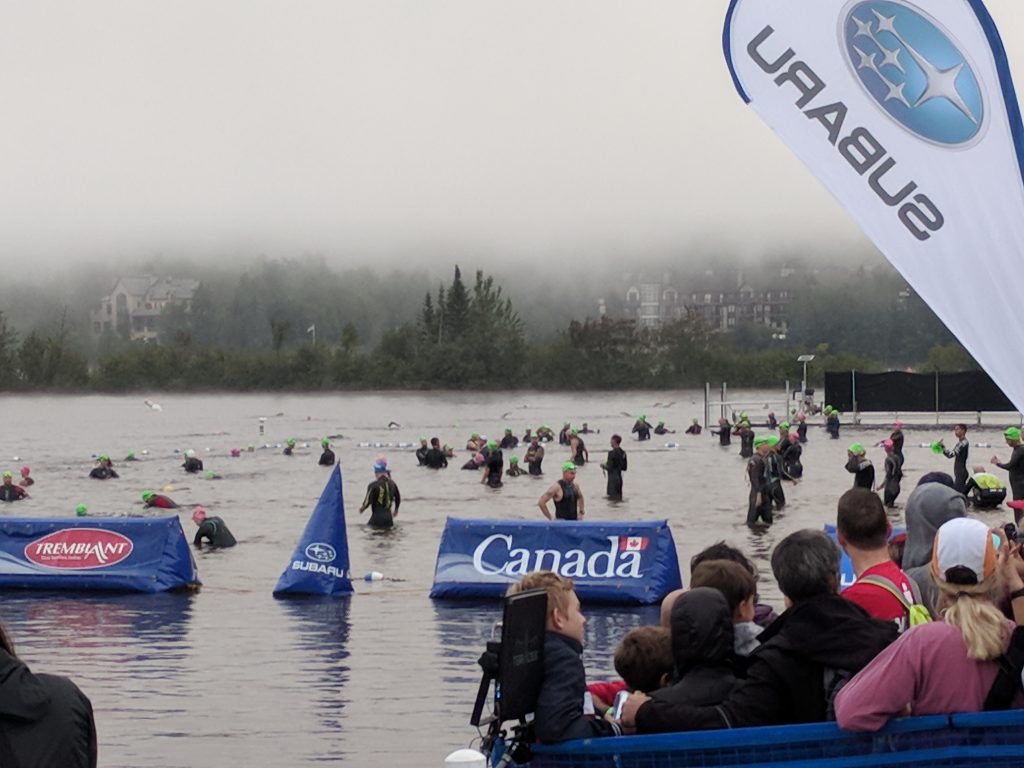
Training
Training for the swim portion of a triathlon requires a mix of skills development and endurance building. Here are some essential components of triathlon swimming training:
- Open Water Practice: Get accustomed to open water swimming as much as possible. This allows you to practice sighting, dealing with waves, and handling other athletes.
- Interval Training: Interval sets that focus on speed and stamina can help improve both your technique and endurance.
- Long Swims: Incorporating long, steady swims into your routine builds the aerobic endurance needed for race-day swims.
- Strength and Mobility: Cross-training with exercises like strength training, yoga, or Pilates can help build the strength and flexibility needed for efficient swimming.
Staying Relaxed & Managing Anxiety
Open water swimming can trigger feelings of claustrophobia, panic, or anxiety, especially for first-timers, which is why it’s important to practice as much as you can in open water and with your wetsuit on so you’re comfortable with compression around your chest and shoulders. Here are a few strategies to manage these feelings during your training and your races:
- Focus on your breathing. Deep, controlled breaths can help calm nerves and regulate your body’s response to stress.
- Keep your strokes smooth and relaxed. Tensing up can waste energy and increase fatigue.
- Visualization is powerful. Before race day work on visualizing a calm and confident swim.
- Training in a group can help you acclimate to the chaos of a mass start so that race day.
In conclusion, for many triathletes, the swim is the most challenging part of the race, for both physical and mental reasons. However, with proper training and mental preparation, athletes can approach the swim with confidence. Open water conditions can be intimidating at first but they also offer an exciting challenge that sets triathlon apart from other endurance events. Getting in enough training and including some time focussing on open water and triathlon specific efficiency will help you succeed in the swim portion of your triathlon.
